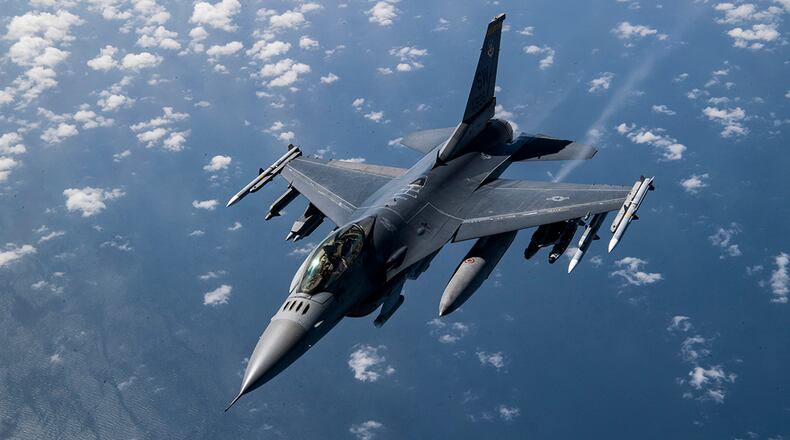Over the next 18 months, Northrop Grumman will complete IVEWS – also referred to as AN/ALQ-257 – development and install the system on several F-16s for flight testing. Additional development, integration, hardware qualification testing and engineering and manufacturing development asset procurement will support the IVEWS developmental test/operational test and operational assessment in early 2023.
“This contract and overall program effort is vital to increase the protection of our F-16 operators as they execute their missions in contested environments,” said Maj. Charles Prichard, chief of electronic warfare integration within the directorate’s F-16 System Program Office. “In order for the F-16 Viper to meet assigned mission sets in line with the CSAF’s fighter roadmap and operate in certain environments, the fleet needs an advanced electronic warfare system. IVEWS lines up with HAF/ACC’s EW plan and recently became the solution that improves the F-16′s survivability and lethality against current and emerging threats.”
IVEWS provides a next-generation electronic warfare system that is internal to the F-16 and interoperable with the on-board APG-83 active electronically scanned array radar. It is designed to open missions systems requirements and provisioned for long-term growth capability to support future upgrades such as the fiber optic tow decoy, adaptive/cognitive processing and open system architecture compliance.
A key part of the effort has been the use of the middle tier of acquisition approach, which leveraged competition between defense companies to realize significant cost and schedule savings without sacrificing capability. This allowed the Air Force to strategically select IVEWS as the advanced fleet electronic warfare solution for the F-16.
“MTA is a pathway that really cuts out all of the red tape and allows you to go faster and cheaper without sacrificing capability,” Prichard said. “The competition [it promotes] is healthy because it creates incentives and allows industry to try to solve a problem for you and get advanced capability to the warfighter as quickly as possible.”
“IVEWS had a fantastic year, moving from lab prototype to flight demonstration,” added Col. Tim Bailey, F-16 system program manager. “It has become Air Combat Command’s F-16 advanced fleet solution and a ‘must-have,’ top-priority program.
“IVEWS will keep the Viper relevant and lethal throughout its extended service life. We are thankful for the unique and collaborative partnership with Northrop Grumman and other stakeholders who continue to accelerate and solve the most complex problems our warfighters face.”
The production and fielding of IVEWS is expected to begin in 2024.
About the Author
